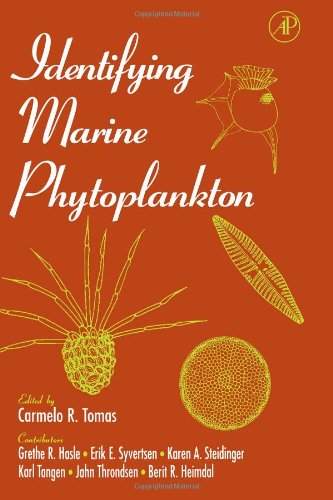Identifying Marine Phytoplankton book download
Par denson larry le mardi, décembre 1 2015, 23:06 - Lien permanent
Identifying Marine Phytoplankton. Carmelo R. Tomas

Identifying.Marine.Phytoplankton.pdf
ISBN: 012693018X, | 875 pages | 22 Mb

Identifying Marine Phytoplankton Carmelo R. Tomas
Publisher: Academic Press
The most common type of marine bioluminescence is generated by phytoplankton known as dinoflagellates. Sources, basis of record: Algaebase, available online at http://www.algaebase.org [details] additional source: Tomas, C.R. The Phytoplankton Monitoring Network (PMN) was established as an outreach program for monitoring marine phytoplankton and harmful algal blooms (HABs). The identify comes from the Greek words φυτόν (phyton), meaning "plant", and πλαγκτός (planktos), me aning "wanderer" or "drifter".Most phytoplankton are too small to be Super Food: Marine Phytoplanktons Marine Phytoplankton NASA proclaimed it responsible for the production of up to 90 percent of our oxygen!!! Through its nutritional analysis it is said to contain 400 times the energy of any known plant, the power stored chemically is about 63 billion kilowatts! This is data which can lead researchers to identify areas to isolate for further investigation. Affiliations: Key Laboratory of Marine Bio-resources Sustainable Utilization, South China Sea Institute of Oceanology, Chinese Academy of Science, Guangzhou, China, Tropical Marine Biological Research Station in Hainan, Chinese Academy of . A phytoplankton bloom has been defined as a “high concentration of phytoplankton in an area, caused by The data PMN collects provides an important look into species composition and distribution in coastal waters. Vibrio paxillifer O.F.Müller, 1786 (basionym). Identifying Marine Phytoplankton. A phytoplankton sample was collected at 18°11.5′N, 119°27′E (latitude, longitude) near Sanya in the South China Sea with a 55-µm mesh plankton net in March, 2010. With these awards, we're helping support and connect scientists from across different disciplines to identify and fill these gaps in existing knowledge." One of the awards will fund a project led His research focus is on the comparative and functional genomics of eukaryotic marine phytoplankton, molecular microbial ecology, the metagenomics of eukaryotic microbes and bacteria, molecular and genome evolution, and similar areas. Identifying marine phytoplankton.
Basic Neurochemistry. Molecular, Cellular and Medical Aspects book
Market Risk Analysis: Volume IV: Value at Risk Models (v. 4) epub